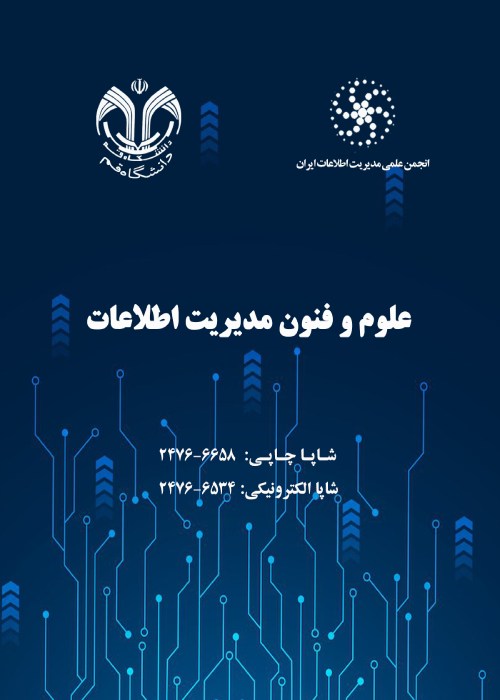Qualitative Analysis of the Behavioral Pattern of Information Security Experts inFacing Cyber Threats
Simultaneously with the developments of the 20th century and the process of globalization in the present era, information and communication technology has facilitated the emergence of a networked society. The new world has evolved into a network whose primary structure is information and electronic communication systems. The transformation of social interactions into virtual communities has led to the rise of social insecurity and new forms of crimes and misdemeanors in virtual spaces. Gradually, with the expansion of information and communication technology, especially the Internet, and subsequently the proliferation of threats and risks associated with it, the concepts of information security, information systems security, and cyber security were also developed. Just as soldiers are trained to handle various threats in war, the world of information is a real battlefield, with hackers and cyber-attacks posing significant risks. Information security experts should be equipped with the necessary skills to effectively deal with cyber-attacks, much like expert soldiers. The current applied developmental research is focused on identifying key indicators to design effective behavioral patterns for information security experts dealing with cyber threats.
In this study, a purposeful and development-oriented approach was employed, using a meta-composite and qualitative-quantitative (sequential-exploratory) method. Initially, 112 sources were selected from 270 primary sources using a library method and were the focus of the work. To identify the security components of information systems, the Barroso and Sandlowski 2007 seven-step technique was utilized, resulting in the calculation of 142 indicators from the selected documents. After clustering the indicators using RapidMiner software, the research identified 5 dimensions and 17 components. Subsequently, a two-stage Delphi method involving two groups of 15 experts was employed to evaluate the questions, value assessment, and validity. Following the completion of the qualitative phase, the study progressed to the quantitative or exploratory stage. An invitation letter and questionnaire, comprising 125 verified indicators, were then prepared and sent to 156 information security experts. And after receiving 111 complete questionnaires, which meets Cochran's requirement for a minimum statistical population size of 111 people, the questionnaire collection phase concluded, and the analysis process commenced with the assistance of SPSS and MATLAB software.
In this study, the dimension of "security threats" has the highest factor load weight of 0.983 among all other dimensions. Within the "security threats" dimension, the component of "unintentional damages" has the highest weight compared to other components. The dimension of "security vulnerabilities" follows with a factor load weight of 0.979, ranking second. The "process factors" dimension ranks third with a factor load weight of 0.975, and the "human factors" dimension also has a factor load weight of 0.975. The fourth rank is held by the dimension of "0.970," and finally, the "technical factors" dimension, with a factor loading of 0.920, ranks last among the dimensions of this research. Despite receiving the lowest score and weighting overall, the "technical factors" dimension has the highest factor load weight assigned to the components of "encryption" and "equipment," with a score of 0.978, and the lowest score assigned to the components of "monitoring" with a weight of 0.88 and "planning" with a weight of 0.84. In the following, the obtained results and prioritizations were compared with those of other studies, and the validity of the results was confirmed based on the validation and verification of the comparisons.
In general, it should be noted that, contrary to the opinion of most data-oriented companies that prioritize "technical factors" in information security, the results obtained in this study have shown that this assumption was incorrect. The importance of the behavioral patterns of information security experts has been confirmed, which is influenced by laws, organizational structure, organizational culture, and training. Finally, with the assistance of the weights assigned to the obtained components and indicators, suggestions were made to modify the behavioral patterns of information security experts after ranking and prioritizing the components and characteristics.
- حق عضویت دریافتی صرف حمایت از نشریات عضو و نگهداری، تکمیل و توسعه مگیران میشود.
- پرداخت حق اشتراک و دانلود مقالات اجازه بازنشر آن در سایر رسانههای چاپی و دیجیتال را به کاربر نمیدهد.



